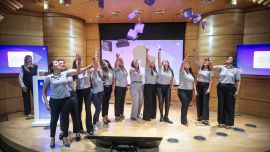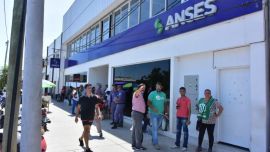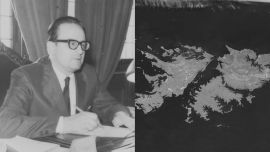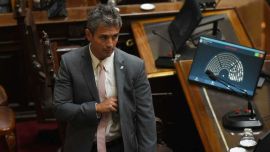After months of relative calm and quiet, investigations into accusations of corruption during the Kirchnerite administrations seized the national agenda this week, as a bombshell investigation by the La Nación newspaper revealed an alleged graft ring involving key businesspeople and former high-level government officials that spanned over seven years.
In an indication of how high up the allegations of corruption and embezzlement may go, former president Cristina Fernández de Kirchner was ordered to appear before a federal judge this Monday, August 13, for questioning. So far, she has not commented publicly on the allegations.
It was a series of photocopied notebooks with detailed information regarding the “collection mechanism” of hundreds of millions of dollars in bribes that went all the way to the Executive that sparked the arrests and raids throughout Buenos Aires City and province, targeting both former members of the Kirchnerite administrations and businesspeople. At least 17 people have now been arrested, since the operation first begun in the early hours of Wednesday morning.
The investigation, led by controversial federal Judge Claudio Bonadio and federal Prosecutor Carlos Stornelli accuses Néstor Kirchner and his wife and successor as president Cristina Fernandez de Kirchner of leading a criminal scheme to appropriate illicit funds stemming from kickbacks paid by companies looking to secure public works projects.
At the centre of the probe is Oscar Centeno, a former Army sergeant who previously worked as the chauffeur of Roberto Baratta, a sub-secretary of the Federal Planning and Public and Investments Ministry during the Kirchner years.
Baratta was considered to be the ‘right hand man’ of Julio De Vido, the embattled former federal planning minister who has been accused of orchestrating a massive kickback scheme around public works projects that defrauded the state of hundreds of millions if not billions of dollars from 2003 to 2015.
HANDWRITTEN NOTES
Centeno – who is now looking for a plea bargain to reduce his sentence – admitted to keeping a series of handwritten notebooks in which he recorded names, places, and specific amounts transported abroad his Toyota Corolla from 2008 to November 2015. Scandalously, his accounts detail alleged trips to the Olivos presidential residence to deliver some US$4 million he claims was personally received by Néstor Kirchner.
Photocopies of the notebooks were presented to the judge by La Nación journalist Diego Cabot, who received the originals from a source on a hot Buenos Aires afternoon on January 8. Cabot received a total of eight notebooks, along with videos and grainy photographs, which detailed Centeno’s trips across Buenos Aires, with Baratta and others on board, to pick up or drop off duffel bags and suitcases filled with money.
The bags were allegedly dropped off at multiple locations, including the former Public Works Ministry, at Baratta’s private properties, and even the private residence of the Kirchner family in the swanky Recoleta neighbourhood in downtown Buenos Aires.
Cabot began to piece together the information in the notebooks and called in two journalism students, Candela Ini, and Santiago Nasra, to help. Cabot also spoke with his editors at the newspaper, deciding to hand over the information to the Judiciary and hold the story back until the judge gave them permission to run it. On April 10, Cabot testified for five hours before prosecutors and handed over the evidence.
Judge Bonadio and prosecutor Stornelli received photocopies of the notebooks, which Cabot returned to his source, according to an investigation by Rodis Recalt in the Noticias weekly news magazine that was released yesterday. The information was added to a previous docket investigating Kirchnerite corruption, allowing the magistrates to estimate the amount of tainted cash in total that was transported by Centeno’s Toyota could reach as high as US$160 million, though they have subsequently indicated that the figure could rise by a further 50 percent.
The depth of the claims is extensive. Allegedly involved in the manoeuvres were several first, second, and third-line members of the Planning Ministry, along with some of the country’s most prominent construction and engineering companies, and their directors.
WARRANTS, ARRESTS
On raids on Wednesday and Thursday, police arrested at least 12 people implicated in Centeno’s notebooks, including the chauffeur himself. By press time, a total of 17 people had been arrested, with another 18 having been called to testify before the judge, including Fernández de Kirchner and former federal judge Norberto Oyarbide. Though prosecutor Stornelli indicated he believes the criminal racket was headed by the Kirchners, a warrant for her arrest wasn’t emitted.
Judge Bonadio, who has sought to prosecute the former president for high treason in involving a Memorandum with Iran related to the AMIA bombing case, once again asked the Senate to strip her of her immunity as a senator. Following protocol, Bonadio also asked the Senate to allow him to search Cristina’s Buenos Aires, Río Gallegos, and El Calafate residences, along with her private offices. From the ruling Cambiemos (Let’s Change) coalition, a petition to vote on the immunity reached Vice-President Gabriela Michetti, yet it would require the support of the Peronist bloc, led by Miguel Ángel Pichetto.
With Fernández de Kirchner rising in the polls amid economic turmoil, her political allies have accused Bonadio and the government of trying to stifle the former president’s chances for a comeback. Two weeks ago, she ordered her own ‘right-hand man’ Oscar Parrilli to set in motion a plan to generate political alliances, in order to present candidates in every province through her Unión Ciudadana party in the 2019 elections. It remains unclear whether the former president herself will choose to run for office.
Interestingly, Bonadio and Stornelli now say they haven’t found the original notebooks containing Centeno’s annotations. Over the past few days, under their orders, police officers have searched 34 different locations, where confiscated PCs, 20 laptops, seven tablets, 13 pen drives, nine external hard drives, two diaries, and a series of firearms, along with documentation. Authorities conducted searches in some of the country’s most well known construction companies, including Techint, Roggio, Supercemento, Isolux, UCSA, BTU, Albanesi, Impsa, Corporación América, and Iesca, the company formerly owned by President Mauricio Macri’s cousin, Angelo Calcaterra.
Judge Bonadio also decided to arrest several prominent businessmen, something that hadn’t occurred in previous cases regarding corruption in the Kirchnerite years. Among those detained is Javier Sánchez Caballero, a former CEO of Iesca who answered to Calcaterra. Also behind bars is Carlos Wagner, head of Esuco and the former president of the Chamber of Construction, Walter Fagyas of Enarsa, Juan Carlos Goicochea of Isolux, and Gerardo Ferreyra, owner of Electroingenieria.
However, what appears to be the strongest evidence yet detailing the extent and impunity of corruption carried out during the Kirchnerite has been tainted by a natural scepticism given the timing of the Judiciary, and the actors behind it. Bonadio, who has publicly come out against the former president, generates suspicion among her supporters. Centrist Peronists, hopefully for a potential electoral victory in 2019, have also come out publicly, accusing the government of attempting to cover up its blunders in terms of economic policy.
The case is but one more example of the Judiciary’s strong sense of rhythm. Yet, the case promises to shake the whole of the political establishment, with even some of those associated with President Macri potential victims of collateral damage.























Comments